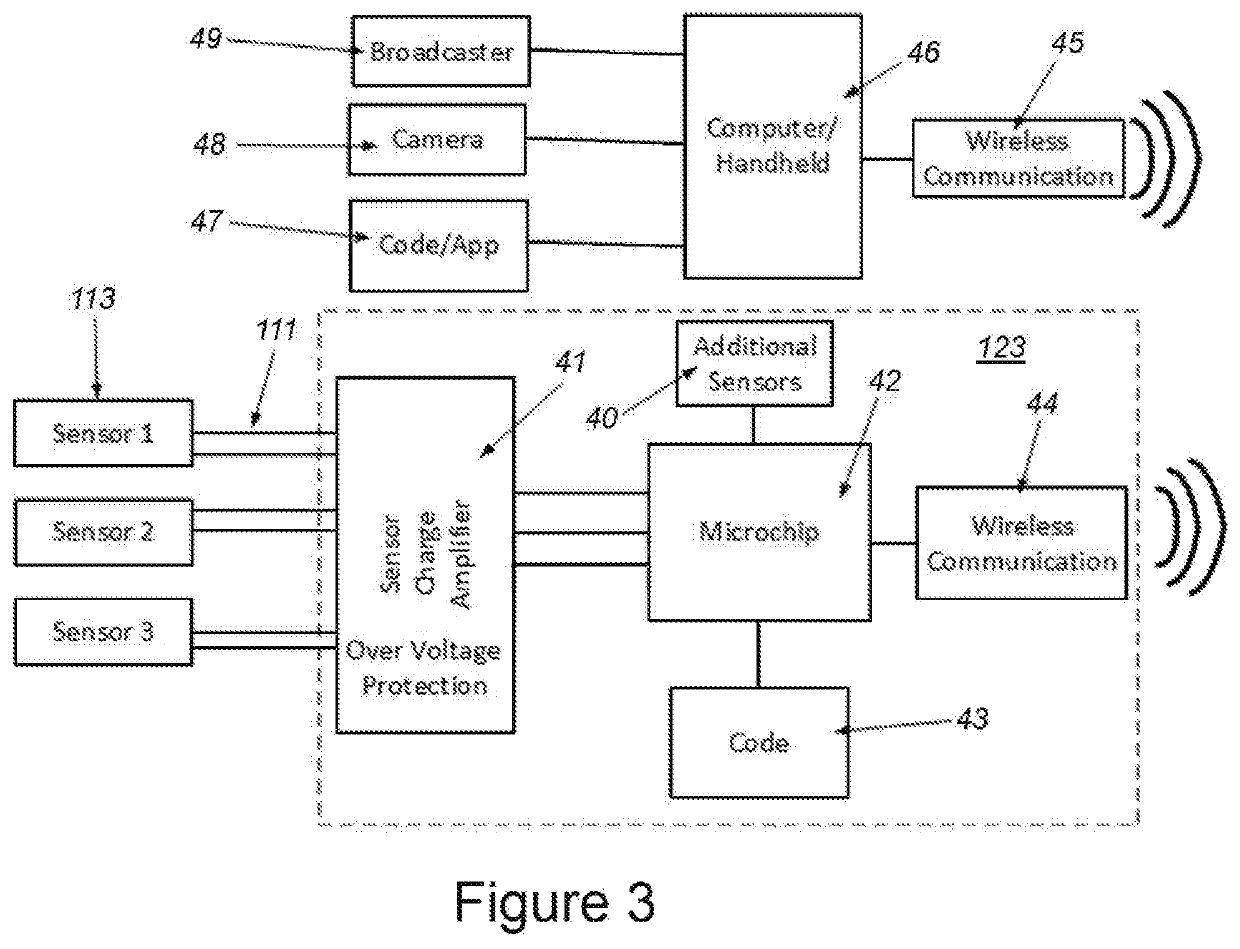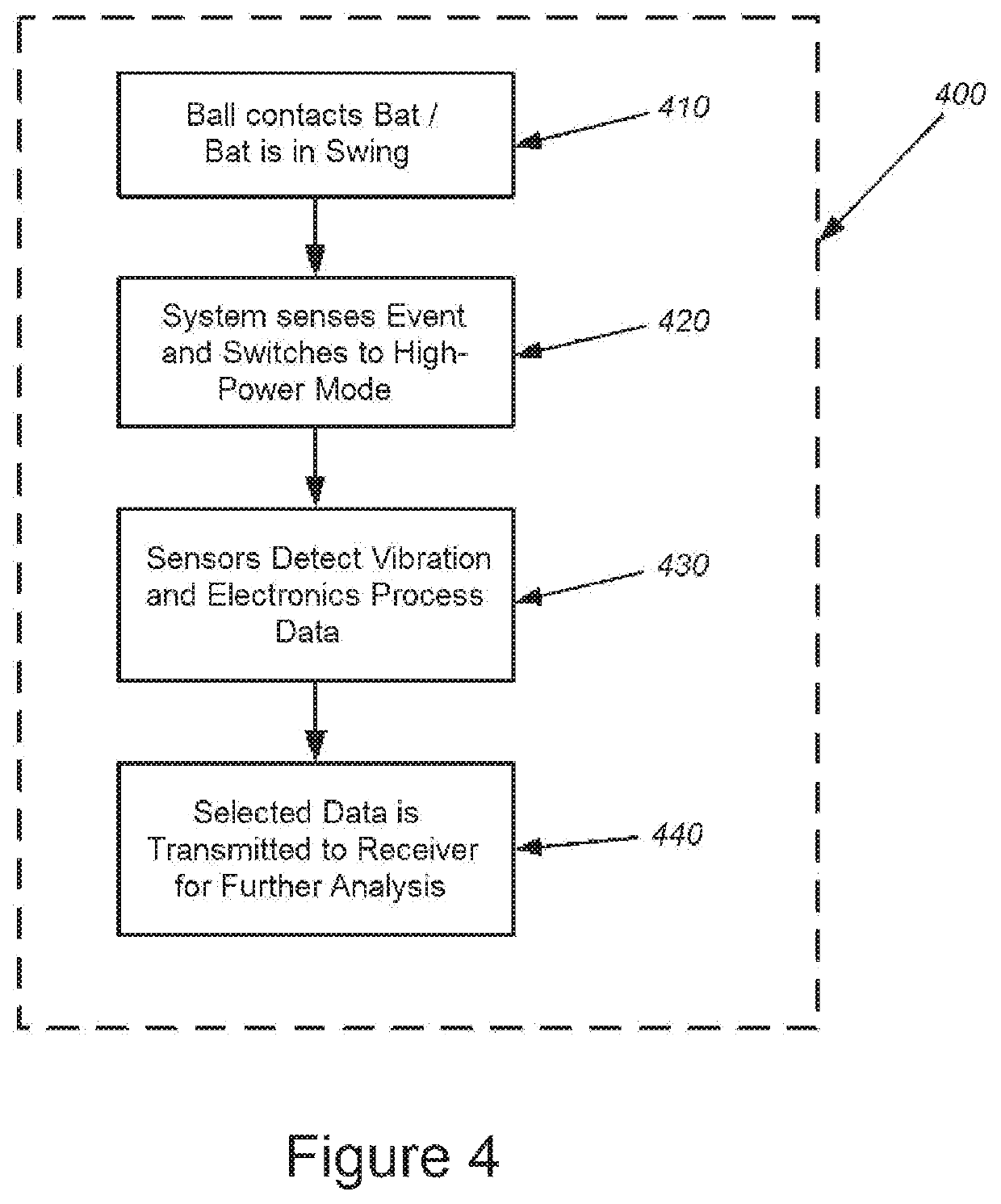System and method for sensing high-frequency vibrations on sporting equipment
a high-frequency vibration and sporting equipment technology, applied in the field of high-frequency vibration sensing systems and methods, can solve the problems of high cost, impact robustness concerns, and operational life, and achieve the effects of reducing the number of recharge or battery changes per match, reducing the power and bandwidth requirements of the device, and increasing the system's operational li
- Summary
- Abstract
- Description
- Claims
- Application Information
AI Technical Summary
Benefits of technology
Problems solved by technology
Method used
Image
Examples
Embodiment Construction
[0019]Sensing the vibrations generated in sports equipment has been suggested previously in prior art. The utility of being able to detect if there was contact between the equipment and the ball, the location of the impact as well as the intensity of the impact is well known to those skilled in the art. However the art is salient on methods that can perform this task in a manner such that the market will accept it and hence there are currently no products available to sense the vibrations on sports equipotent.
[0020]To date, methods to detect vibrations in sport equipment have suffered from the following deficiencies:
[0021]Low-frequency sensing. For instance, MEMS accelerometers are only capable of sensing frequencies up to ˜2 kHz where a number of impacts create signals at much higher frequencies.
[0022]Direct impact with the ball. A number of prior art descriptions include placing sensors on the contact surface of the equipment. This increases the probability of damaging the sensors...
PUM
 Login to View More
Login to View More Abstract
Description
Claims
Application Information
 Login to View More
Login to View More - R&D
- Intellectual Property
- Life Sciences
- Materials
- Tech Scout
- Unparalleled Data Quality
- Higher Quality Content
- 60% Fewer Hallucinations
Browse by: Latest US Patents, China's latest patents, Technical Efficacy Thesaurus, Application Domain, Technology Topic, Popular Technical Reports.
© 2025 PatSnap. All rights reserved.Legal|Privacy policy|Modern Slavery Act Transparency Statement|Sitemap|About US| Contact US: help@patsnap.com



